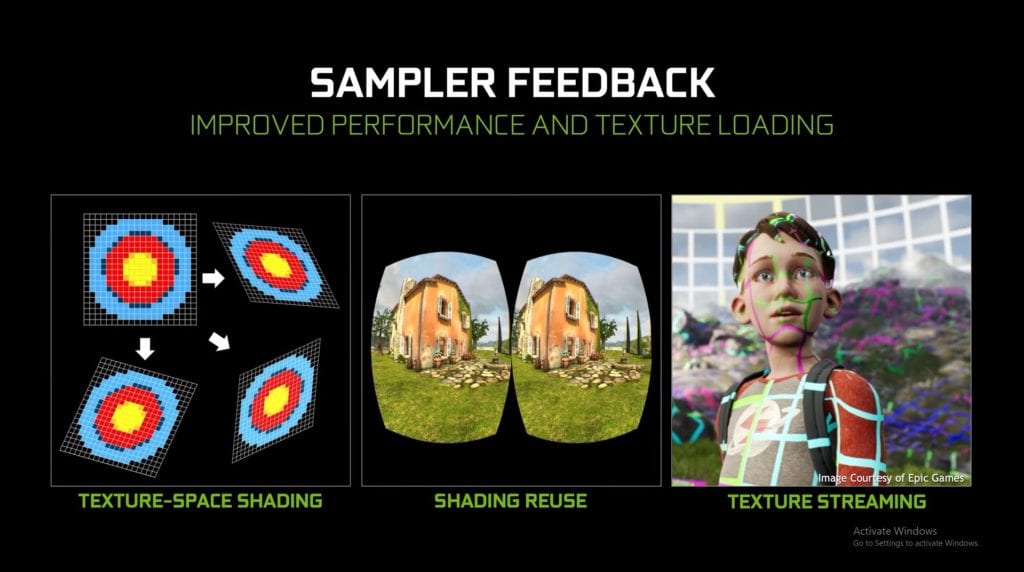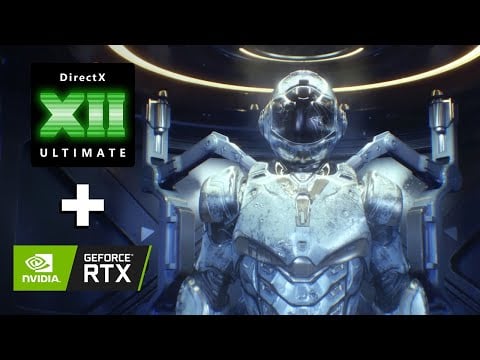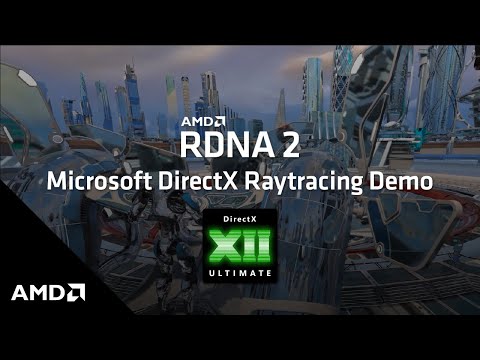Microsoft has now updated its DirectX API with DirectX 12 Ultimate, whose core focus is one raytracing and other nifty features for video game development. In their new blog post on the API update, Microsoft explained how DX12 Ultimate will help developers and GPU platform creators (AMD and NVIDIA).
As seen in the video above, DX12 Ultimate will aim to become the leading API for cross-platform development. It brings updated features on DXR (DirectX Raytracing), Variable Rate Shading, Mesh shaders, and sampler feedback.
So, what are these features and how will they help in us getting better looking (and performing) games?
DirectX Raytracing (DXR)
DirectX Raytracing simulates the realistic path of light in any rendered scene, enabling the use of better shadows, reflections, and other effects previously only seen in bigger productions like feature films.
We’ve previously written much about NVIDIA’s implementation of raytracing which works under DirectX 12. With the upcoming Ampere (RTX 3000) series of cards coming up, raytracing will become even more accessible across every price range. Aside from that, AMD’s upcoming RDNA 2 cards will also support DXR, which is being used in the next-gen consoles (PS5 and Xbox Series X).
We also recently compared the Geforce RTX 2060 Super with the Xbox One X. The next generation of consoles will be using more PC-like architecture as well as be powered by DX12 Ultimate. By doing that, next-gen console-to-pc ports will be much easier to develop.
Variable Rate Shading (VRS)
Variable Rate Shading is the secret sauce that both the PS5 and Xbox Series X are using to power games at higher resolutions like 4K. Aside from DirectX 12 Ultimate, the technology is supported by Intel’s 10th gen CPUs.
As a developer, a single API for PC and Xbox is a boon for my business. If my programmers know DirectX 12 Ultimate they can code for either PC or console.
Koen Deetman, CEO & Game Director, KeokeN Interactive
VRS allows developers to put more detail into different parts of the scene, or rather where it matters. E.g in a cover-based shooter like Gears 5, the center part of the screen requires more detail as it has the player character. The sides aren’t as important as you’ll be mostly focused on what’s in the center, with both the main character as well as the enemies being aimed at. Here, VRS will help in focusing more detail where it matters.
Mesh Shading
As NVIDIA explains it –
With DirectX 12 Ultimate, Mesh Shaders will be faster and easier for developers to implement. So look out for worlds with lifelike forests filled with vegetation, megacities with high levels of detail across the entire screen, and of course, space scenes with massive space stations and stunning asteroid fields.
This will help as games get bigger in scope and size. With massive games like Assassin’s Creed: Odyssey rendering high detail scenarios will be even more GPU-intensive. Mesh shaders will help in reducing that load.
Sampler Feedback

Similar to VRS, Sampler Feedback in DirectX 12 Ultimate will help in more efficient use of the GPU’s resources. As explained in the NVIDIA blog –
By using Sampler Feedback, we can more efficiently shade those objects at a lower rate (say, every third frame, or perhaps even lower than that) and reuse the object’s colors (or “texels” as they’re referred to) as calculated in previous frames. This notion of work reuse can be used for ray tracing, especially in the case of global illumination, which is a common example of a slow-changing and very expensive shading computation.
So there you have it. The core philosophy behind DirectX 12 Ultimate is to provide a more unified platform for developers. It provides more efficient techniques to perform GPU functions. With DX12 Ultimate and the new consoles’ architecture, it’ll become easier to port games over different platforms, and will ensure even better-looking game worlds without any compromises.
The post DirectX 12 Ultimate Explained – How Microsoft’s API Will Improve Video Game Graphics in Next-Gen Consoles and PCs appeared first on TechQuila.




